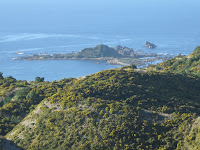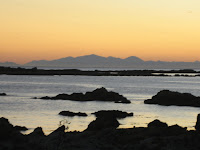
And this bustling township – not small by NZ standards – is just a couple of kilometres from the main city centre.
I think there are three things that account for it’s success - as providing local shopping for the surrounding community cannot possibly account for the amount of money that changes hands here.
One factor is the hospital, which sits where it has been for 130 years, five minutes walk down the road. Lots of hospital staff must be spending part of their pay packet here every week. And of course a never ending stream of patients and relatives (many from out of town) buying not only “Hospital Cards and Flowers” but all kinds of casual purchases. There are three pharmacies which are kept busy filling the prescriptions of discharged patients. But the hospital alone cannot account for the existence of this vibrant little township, which even in the present time has very little vacant retail space.
There is also the ethnic food dimension which may be significant. If you want Halal meat, bulk spices or taro (a starchy root vegetable which is a staple for many Pacific islanders) you would come across the city to shop here.
For the rest of the picture, I think we must look to the strength of the small business sector in NZ - a land packed with small businesses of all kinds. Over a quarter of New Zealanders work in firms with less than five “employees”. And we must conclude that New Zealanders patronise these small businesses in a big way. It is also a land which lacks the very powerful chains that characterise Europe and America. It is a long way from nearly every where, and it is just not worth the effort for a multinational to come here and set out their stall. Thus the field is left clear for local initiative.

























